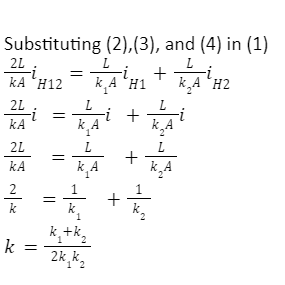EMF is induced when there is a change in flux either in the coil or in the conductor. It is also called induced electromotive force, electromagnetic induction, and electromotive force induction. The unit for electromotive force is Volt and the formula is ε = V + Ir; where V= voltage, I= current, ε = electromotive force, and r= internal resistance.
There are two ways with which you can induce the electromotive force:
- In the first method, you are supposed to place an electric conductor within a moving magnetic field
- In the second method, a constantly moving electric conductor is placed between a static magnetic field to induce electromotive force.
Applications of EMF
- EMF is used in generators.
- The concept of induced electromotive forces is used in galvanometers.
- Transformers work on the same principle.
- EMF is also used in solar cells, thermoelectric devices, and electrochemical cells.
What is Current?
When electrons or ions pass through an electrical conductor at a specific rate, that rate with which the electrons pass or flow while making the circuit complete is known as current. SI unit of current is the ampere, denoted as (A). An ammeter is a device used to measure electric current. Currents are further classified into two categories:
- AC: Stands for alternating current. It involves electrons that are moving in both directions.
- DC: DC stands for direct current and involves electrons flowing in only one direction.
What is the Relation between Induced EMF and Current?
The change in magnetic flux within a closed circuit produces EMF, and the current that flows in it is known as the induced current. This process of changing the magnetic flux to create induced electromotive force is called electromagnetic induction, developed after a series of experiments performed by Michael Faraday.
Faraday took a cylindrical coil made up of insulated copper wire and connected it in series with a galvanometer in one such experiment. He then took a bar magnet, with its north pole pointing towards the coil, and moved it in an up and down motion leading to observations, reflecting a connection between induced EMF and current:
- A deflection is recorded in a galvanometer whenever there is some motion between the coil and the magnet, thereby showing induced current flow. The deflection only happens when there is motion between the coil and the magnet.
- The direction of the flow of the current changes with a change in the position of the magnet.
- The deflection depends on the speed of the magnet; the faster the magnet moves, the more is its deflection, and vice-versa.
- When the south of the magnet is pointed towards the coil, there is a change in the direction of flow of current into the opposite direction. However, the results are still the same.
Faraday’s Law
Faraday gave two laws involving the connection between the induced EMF and current, known as Faraday’s Laws of electromagnetic induction. The two laws are as follows:
Faraday’s First Law states that the EMF is induced when the magnetic flux changes across the coil with time. There are a few ways to change the intensity of the magnetic field in the loop.
- By moving the coil of the magnetic loop
- By rotating the coil
- By moving the magnet close or far from the coil.
- By changing the position of the coil in the magnetic field.
Faraday’s Second Law: It states that the induced EMF is equal to the rate of change of the flux
=-N∆∅/∆t
ε= Electromagnetic Force, ∅= Magnetic Flux, N= No. of turns.
Factors Affecting the EMF Induced
The following factors have an effect on the EMF induced:
- It is proportional to the number of turns present in a coil.
- It depends on the speed of the conductor in the magnetic field.
- It depends on the length of the conductor available.
- The rate with which the conductor cuts through the force.
Conclusion
When electrons or ions pass through an electrical conductor at a specific rate, that rate with which the electrons pass or flow while making the circuit complete is known as current. EMF or electromotive force is induced through a change in flux either in the coil or the conductor. Induced EMF and current give rise to electromagnetic induction. The principle of induced electromotive force is applied in transformers, generators, and galvanometers. The connection between induced EMF and current became the basis of Faraday’s law of induction.

Conclusion
The measure of temperature is the microscopic kinetic energy of molecules and atoms that is able to transfer to neighbouring molecules and atoms in a process known as heat conduction. The rate of heat conduction varies for different objects and materials. We define a heat conduction equation as one that describes the heat flow for a body of material of known dimension and placed under a temperature difference. The coefficient of thermal conductivity is a constant that appears in this equation. Its value describes how easily heat transfer can take place for different materials. Furthermore, we discussed the applications of thermal conductivities in describing thermal conductors and insulators.
 Profile
Profile Settings
Settings Refer your friends
Refer your friends Sign out
Sign out






